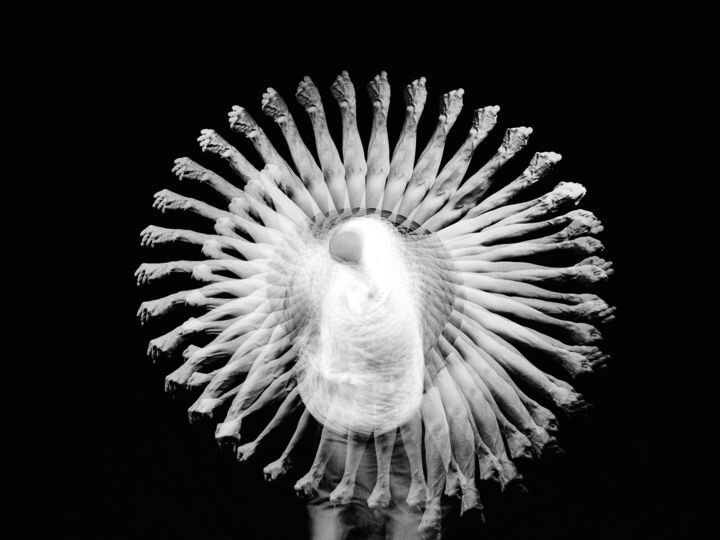 Spiros Politis THE MAN MACHINE - LIMITED EDITION 6/25 (2015)
Spiros Politis THE MAN MACHINE - LIMITED EDITION 6/25 (2015)
WHY ARE ARTWORK DESCRIPTIONS SO IMPORTANT?
On Artmajeur, when you have uploaded the photo of one of your works, then completed the information concerning the work itself (dimensions, type of work, materials used, etc.), you must enter a description. This section is designed for three reasons:
1. Describe your work for search engines (SEO).
The description must respect a number of rules to be correctly indexed by search engines (SEO). If you write a brief explanation of your work, your page is more likely to appear in the top search results. This information ranking system is called SEO, an acronym for "Search Engine Optimization", is a process used to optimize the relevance of a website's content and the popularity of its links, so that its pages are easier to find, more relevant and popular for users' search queries and, therefore, for search engines. Also, in this context, it should be pointed out that the more people linger on your profile, reading content, the better your page will rank on different browsers;
2. Describe for the visitor in order to know more about the work
It is important that a work be accompanied by a description, because visitors, just like when they go to a museum, want to know more about your work. Who would want to buy a work (especially on the internet where the buyer has not physically seen it) if there is no relevant information? It is therefore a necessary step to sell.
3. Describe to sell
Adding a description to your work is not only useful for search engines, but also for art lovers, gallery owners and journalists. Indeed, if the first will be stimulated to buy by learning the particularities and the reasons for which you created it, the second will see in it a guarantee of professionalism, will be more inclined to work with you, and will be able to use your writing to enhance your work on social networks and in articles.
HOW TO MAKE A GOOD DESCRIPTION OF A WORK OF ART?
The description of your work is one of the most important points for you to be seen and to sell. It must be relatively short in order to be read. In order to enhance your work, there are simple and effective tips for correctly describing them:
1. Objective description of the work:
You have to start by objectively describing what you see in the work (protagonist, background, colors). But also if it is a work representing a specific place, it must be mentioned, this will promote referencing. You can start by describing from left to right, for example. The important thing is to have a real description of the work.
2. Message conveyed by the work:
It is important to open up to collectors and explain to them why you have decided to cover a certain subject or theme. When the name of your work is already “a message” itself, it is important to share its meaning with visitors.
In short, you must ask yourself a question: why did I paint this subject, what did I want to say? The answer will be in your description.
3. The technique used to create the work:
If the technique you used is special and/or innovative, you must specify this in the description. All other information about the work (dimensions, techniques, style, support...) that you have already mentioned when you upload a work to Artmajeur are not to be included in the description of the work.
SOME CIURTS EXAMPLES OF WORKS OF ART DESCRIPTION
To make it easier for you, here are some examples of artwork descriptions:
1. Leonardo da Vinci, The Mona Lisa (circa 1503-1506):
 Mona Lisa, Leonardo da Vinci (Louvre Museum - Paris)
Mona Lisa, Leonardo da Vinci (Louvre Museum - Paris)
The painting depicts a seated woman facing the left of the painting. His face is almost frontal and his gaze is directed towards the observer. The background that can be seen beyond the parapet is a lake landscape dotted with hills, cliffs and high mountains. The work depicts Lisa Gherardini. With regard to the pictorial technique of sfumato, this revolutionary stylistic technique by Leonardo helped create a sense of mystery around the painted figure. One of the strengths of the Mona Lisa is her particularly ambiguous smile;
2. Piet Mondrian, Composition with red, yellow and blue (1929):
 Composition with red, yellow and blue Piet Mondrian1930 (Kunsthaus - Zürich)
Composition with red, yellow and blue Piet Mondrian1930 (Kunsthaus - Zürich)
Inside the painted surface, thick black lines, orthogonal to each other, create rectangular and square backgrounds. The colors used are the primary colors, that is to say yellow, red and blue, which are arranged according to an order of composition aimed at formal and chromatic balance. These last colors are linked to a specific symbolism: yellow represents solar energy, red the union of light and space, and blue spirituality;
3. Alberto Giacometti, The Walking Man I (1960):
The sculpture represents a character taking a big step forward. The work interprets the human figure with essential and elongated ascending forms. The protagonist of the sculpture is frail and afflicted, that is to say an emaciated body which, despite everything, tries to carry within itself the hope of finding the strength to be reborn. The sculpting technique is carried out by pieces of material, which coagulate along the limbs and the emaciated body.


 Selena Mattei
Selena Mattei